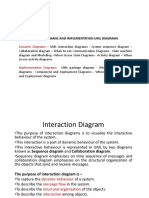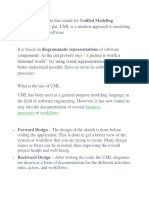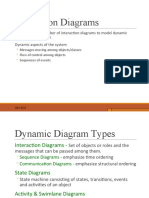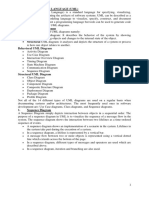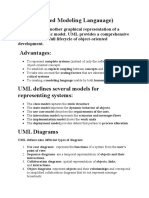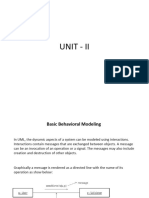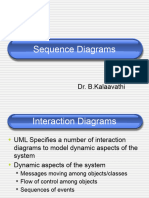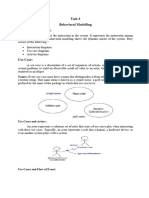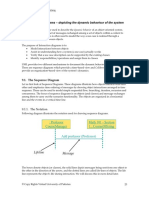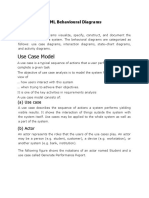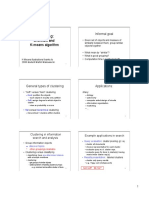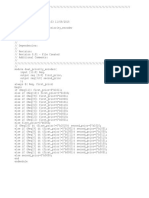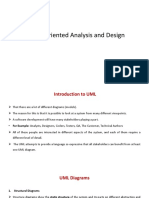0% found this document useful (0 votes)
43 views20 pagesSequence Diagram
The document discusses various UML diagrams used for modeling dynamic aspects of systems, including System Sequence Diagrams (SSD), Interaction Diagrams, Activity Diagrams, and State Machine Diagrams. It explains the purpose and components of each diagram, such as the representation of events, states, and transitions in SSDs and State Machine Diagrams, as well as the sequential and collaborative interactions depicted in Interaction Diagrams. Guidelines for naming system events and operations, as well as when to use each type of diagram, are also provided.
Uploaded by
vedarajCopyright
© © All Rights Reserved
We take content rights seriously. If you suspect this is your content, claim it here.
Available Formats
Download as DOC, PDF, TXT or read online on Scribd
0% found this document useful (0 votes)
43 views20 pagesSequence Diagram
The document discusses various UML diagrams used for modeling dynamic aspects of systems, including System Sequence Diagrams (SSD), Interaction Diagrams, Activity Diagrams, and State Machine Diagrams. It explains the purpose and components of each diagram, such as the representation of events, states, and transitions in SSDs and State Machine Diagrams, as well as the sequential and collaborative interactions depicted in Interaction Diagrams. Guidelines for naming system events and operations, as well as when to use each type of diagram, are also provided.
Uploaded by
vedarajCopyright
© © All Rights Reserved
We take content rights seriously. If you suspect this is your content, claim it here.
Available Formats
Download as DOC, PDF, TXT or read online on Scribd
/ 20







